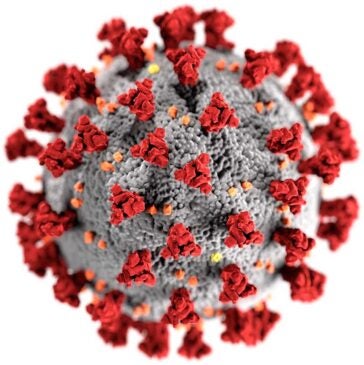 A significant impact of PFAS on human health is reduced immune system response, i.e. strength. This may mean getting a cold virus more often, or maybe even a slightly more severe bout of the flu. But there’s a complicated and wide range of immune system responses that can occur from exposure to PFAS. STEEP has long focused in this specific area of study.
A significant impact of PFAS on human health is reduced immune system response, i.e. strength. This may mean getting a cold virus more often, or maybe even a slightly more severe bout of the flu. But there’s a complicated and wide range of immune system responses that can occur from exposure to PFAS. STEEP has long focused in this specific area of study.
Research has shown how PFAS can reduce the effectiveness of vaccines, and a recent STEEP study worked to understand if PFAS could be related to mortality from COVID-19. Research was led by STEEP trainee Jahred Liddie, PhD candidate at Harvard University under Elsie Sunderland, PhD, Project 1 Lead. Liddie focused on measurements of PFAS in drinking water and assessed statistical relationships between data and deaths resulting from COVID-19, at both local and national levels.
Recently published in the Journal of Exposure Science & Environmental Epidemiology, made use of publicly available data sources. Two sources for drinking water data were assessed, including national Environmental Protection Agency (EPA) survey data, collected between 2013 and 2015. Additionally, data was reviewed from 24 states representing almost 10,000 community water systems, with a focus on 2017-2020, to understand correlations pre-COVID vaccine. Liddie and colleagues also sourced mortality data from the New York Times for their analysis.
Statistics were used to evaluate if county-level PFAS concentrations in drinking water related to trends with COVID-19 mortality. In general, PFAS contamination was positively associated with COVID-19 mortality. What does that mean, exactly? If PFAS were detected at elevated levels, there was an increase in the mortality rate relative to the expected rate. While this observed association cannot be reduced to mean PFAS = COVID-19 death, it highlights the complex interaction between contamination and human health.
Liddie’s research demonstrated that PFAS contamination as low as 5 ng/L (5 drops of PFAS in an Olympic-sized swimming pool) was associated with a 12% increase in mortality. This level falls just above the EPA regulatory limit for drinking water, 4 ng/L, aimed at perfluorooctanoic acid (PFOA) and perfluorooctane sulfonate (PFOS). While many factors can influence mortality rate, PFAS contamination may impact this broad area of human health. STEEP researchers, including Liddie, will likely build on this impressive work as we untangle the diverse ways that PFAS have impacted lives.
Liddie, J.M., Bind, MA., Karra, M. et al. County-level associations between drinking water PFAS contamination and COVID-19 mortality in the United States. Journal of Exposure Science and Environmental Epidemiology 2024.

